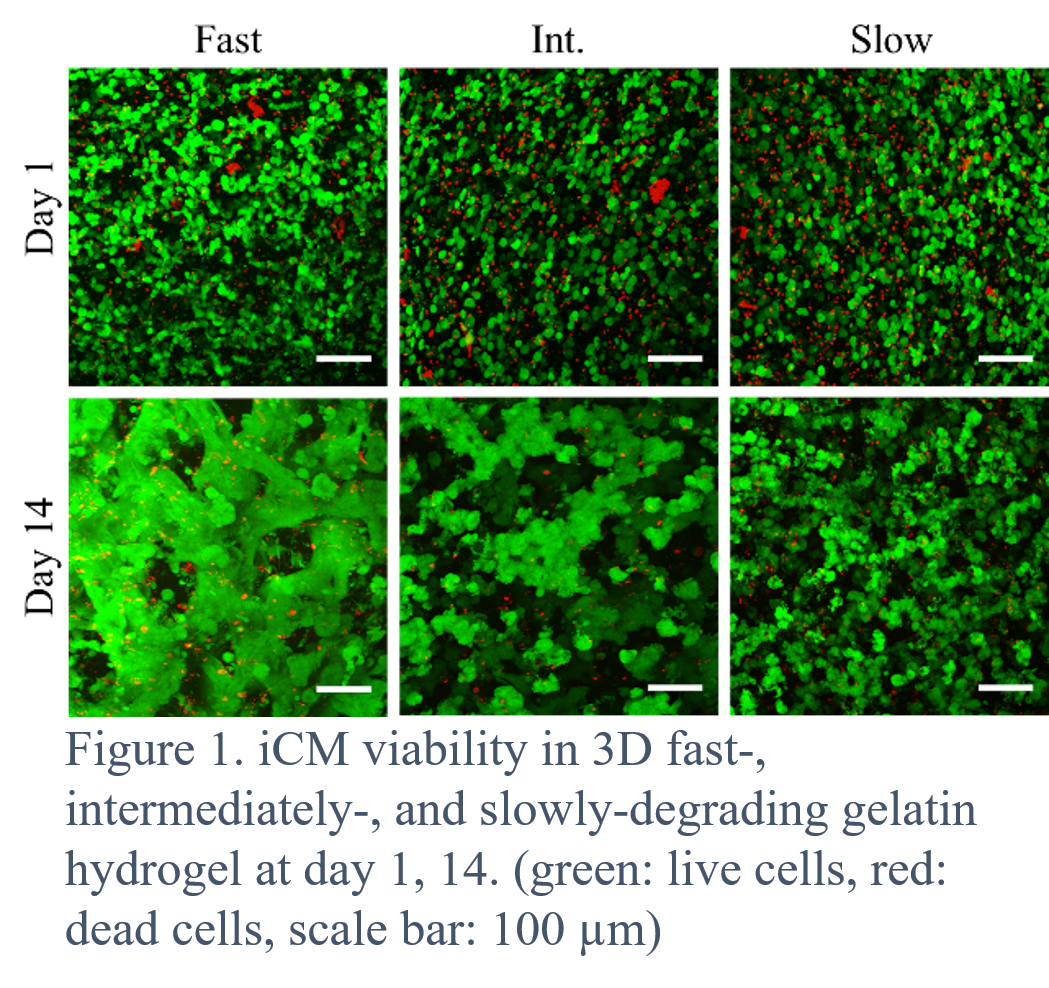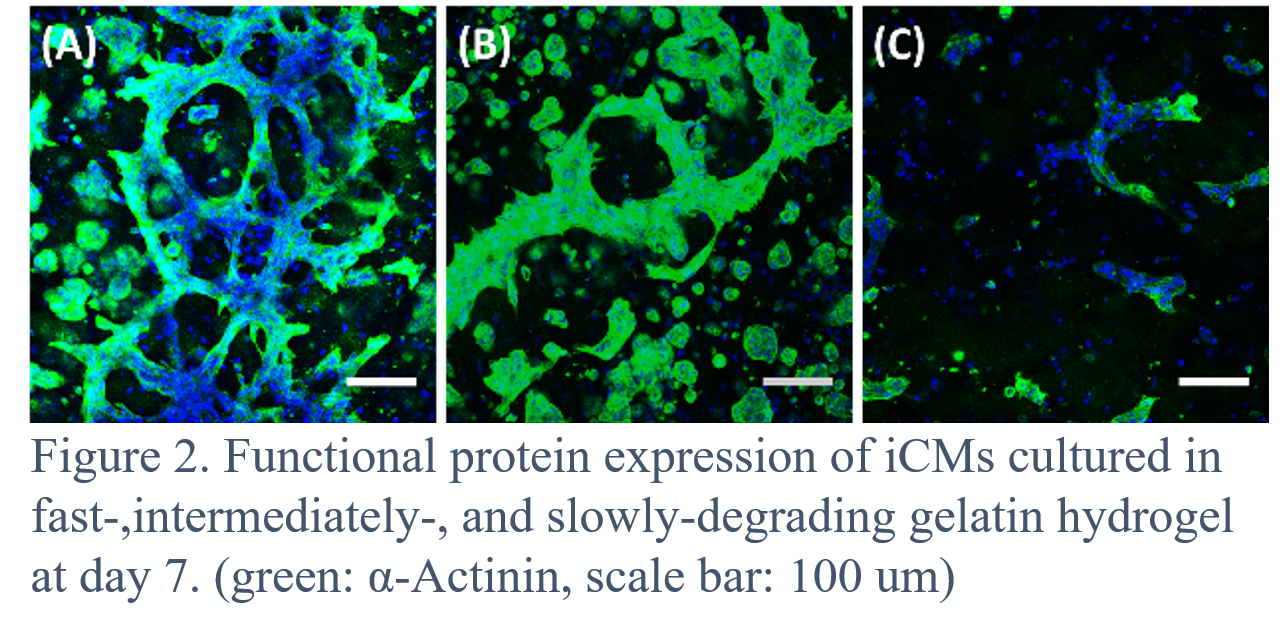Introduction: Myocardial infarction (MI) is an irreversible necrosis of myocardial tissue due to prolonged ischemia, and is the leading cause of death in the US. Human induced pluripotent stem cells (hiPSC) represent an attractive cell source for treating MI by regenerating cardiac tissues given their unlimited proliferative potential, and ability to differentiate into cardiomyocytes. However, the efficacy of transplanting cells alone is often low due to poor cell survival and engraftment, as well as lack of structural support and mechanical properties needed for functional tissue integration. As such, there is a critical need to develop injectable matrices as cell carriers to enhance the efficacy of hiPSC-derived cardiomyocytes (iCMs) for cardiac repair. Gelatin hydrogels are derived from collagen, one of the most abundant extracellular matrix proteins in heart tissues. The goals of this study are to develop gelatin hydrogels with tunable degradation as delivery matrices for iCMs, and determine optimal degradable profile of gelatin hydrogels that best support iCM survival, maturation and formation of functional 3D cardiac patches.
Materials and Methods: To synthesize gelatin hydrogels with tunable degradation rate, vinyl sulfone groups were introduced to gelatin macromers at different concentration. Using poly(ethylene glycol) dithiol as a crosslinker, three different biodegradable gelatin hydrogel compositions were prepared. iCMs were generated from patient specific hiPSC using cocktails of soluble factors following previously reported protocols[1]. To facilitate rapid formation of cell-cell contact among iCMs for survival and formation of cellular networks in 3D, we encapsulated iCMs at high density (350 M/mL) in 3D microscale hydrogels (4 µL). iCM-ladden microgels were then cultured in cardiomyocyte differentiation media for 14 days. Outcomes were analyzed for gross morphology, cell viability, functional protein analysis (α-Actinin).
Results and Discussion: Gelatin hydrogels with all three degradation profiles led to efficient gelation after encapsulating high density of iCMs. When incubated in collagenase solution (2 U/mL) in vitro, three gelatin hydrogel formulations degraded fully after 60, 180, 375 min respectively. (denoted as fast, int., slow degrading groups) (Fig. 1). All three hydrogel formulations supported high cell viability during 14-day culture (Fig. 1). By day 14, iCM formed thick and tight honeycomb-like structure in fast-degrading gels, whereas iCM clumps were not fully connected in intermediately- and slowly-degrading gels (Fig. 1). iCMs in all three groups were positive for functional protein α-Actinin, and showed sarcomeric structure by day 7 (Fig. 2). While noticeable cell beating was observed in all three groups, only iCMs cultured in fast-degrading hydrogels showed synchronized beating through interconnected cellular network.
Conclusion: Here we report the development of gelatin hydrogels with tunable degradation as injectable matrices for delivering hiPSC-derived cardiomyocytes. Our results showed that degradation rate has a significant impact on modulating iCM fate and functions of engineered cardiac tissue patch. We envision such degradable gelatin hydrogels will provide a valuable tool to enhance hiPSC cell-based cardiac tissue repair, as well as for mechanistic studies of stem cell fate regulation in 3D biomimetic niche.


Acknowledgement: The authors would like to thank NIH Pioneer Award (NIH 1DP1LM012179-01) (S. W., F.Y.), NIH R01DE024772 (F.Y.), California Institute for Regenerative Medicine (TR3-05569) (F. Y.) and National Science Foundation CAREER award program (CBET-1351289, F. Y.) for funding. S.L. would like to thanks Stanford Bio-X fellowship for support.
References:
[1] A. Sharma, G. Li, K. Rajarajan, R. Hamaguchi, P. W. Burridge and S. M. Wu, J Vis Exp, 2015, DOI: 10.3791/52628.